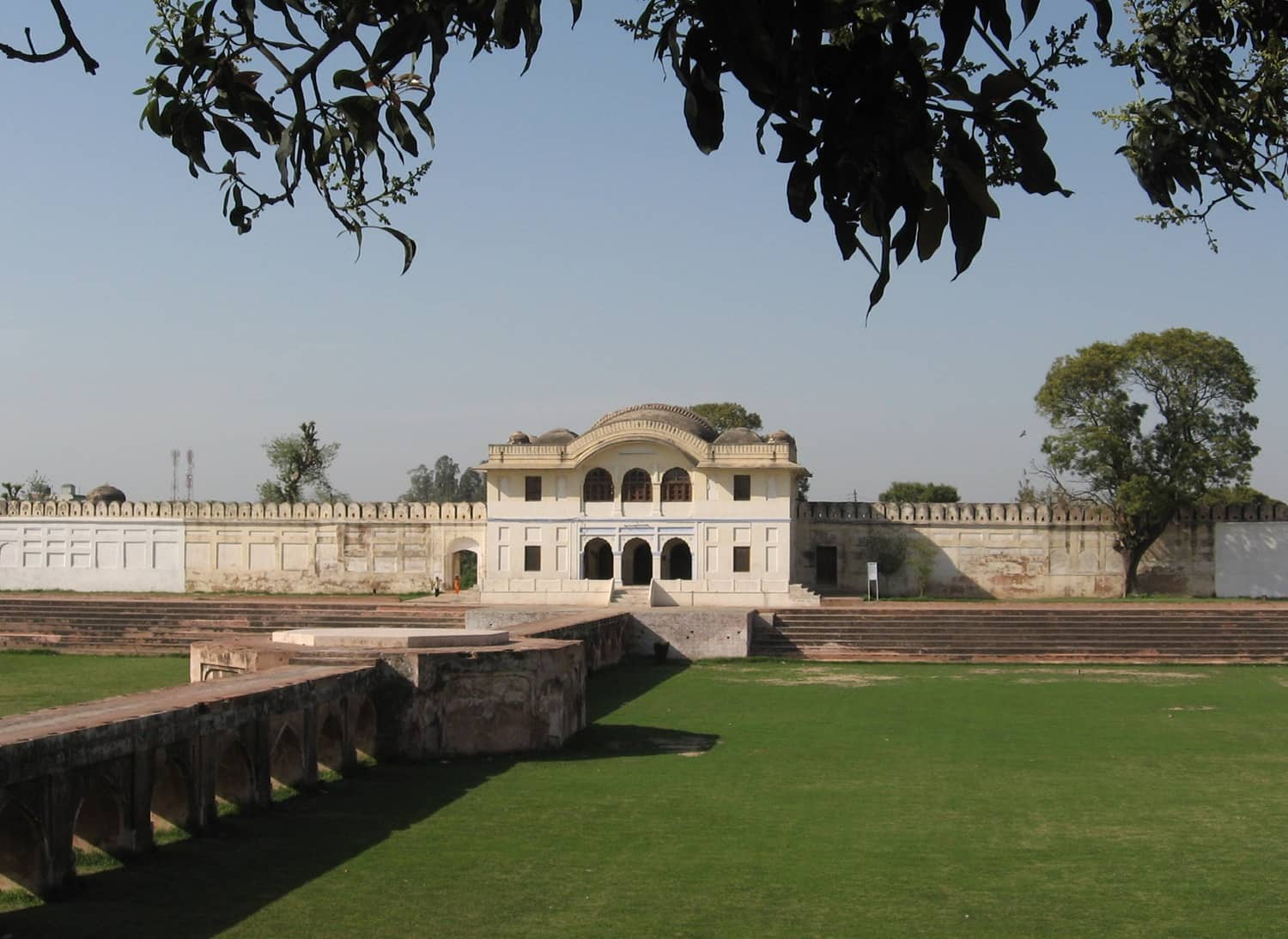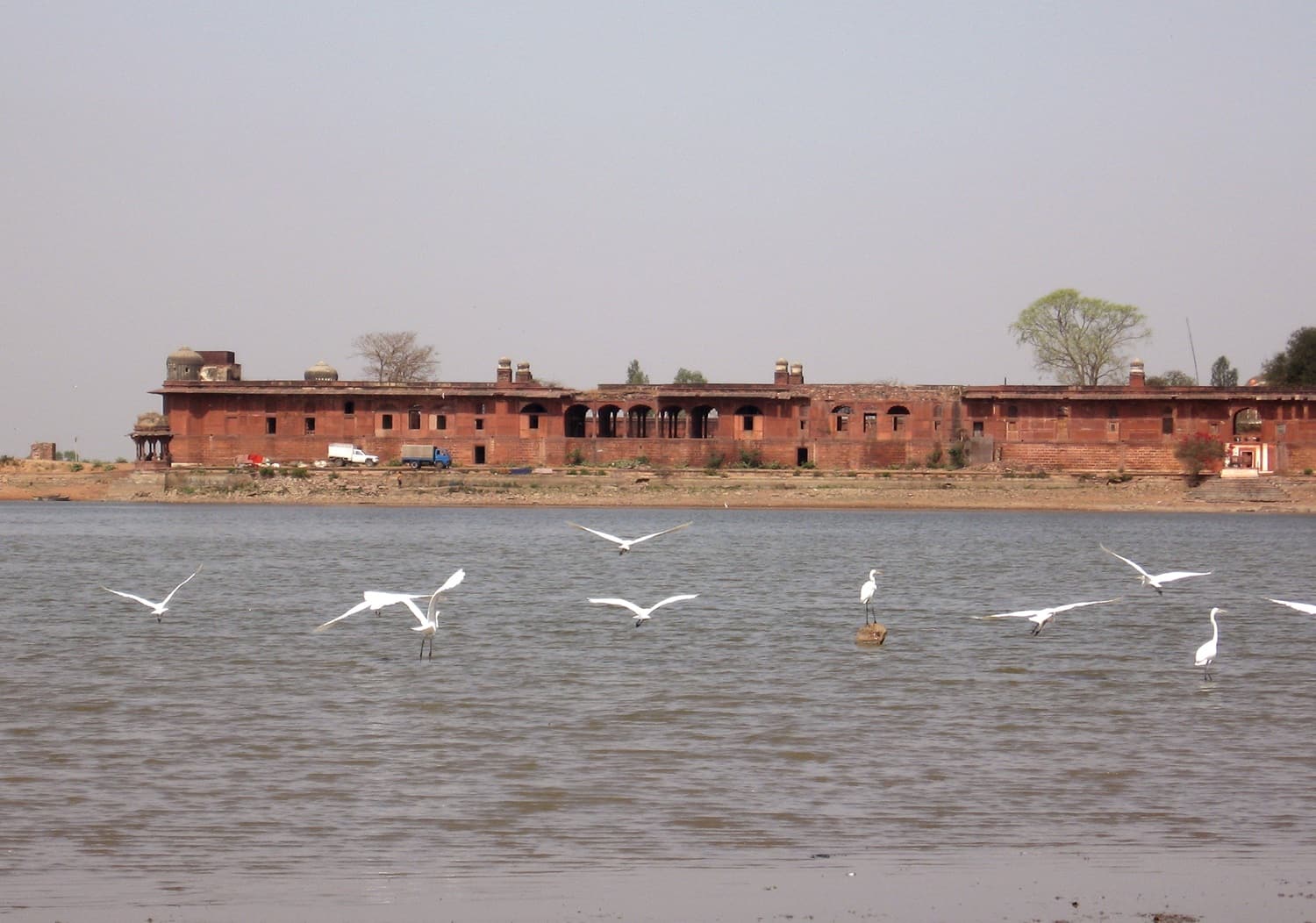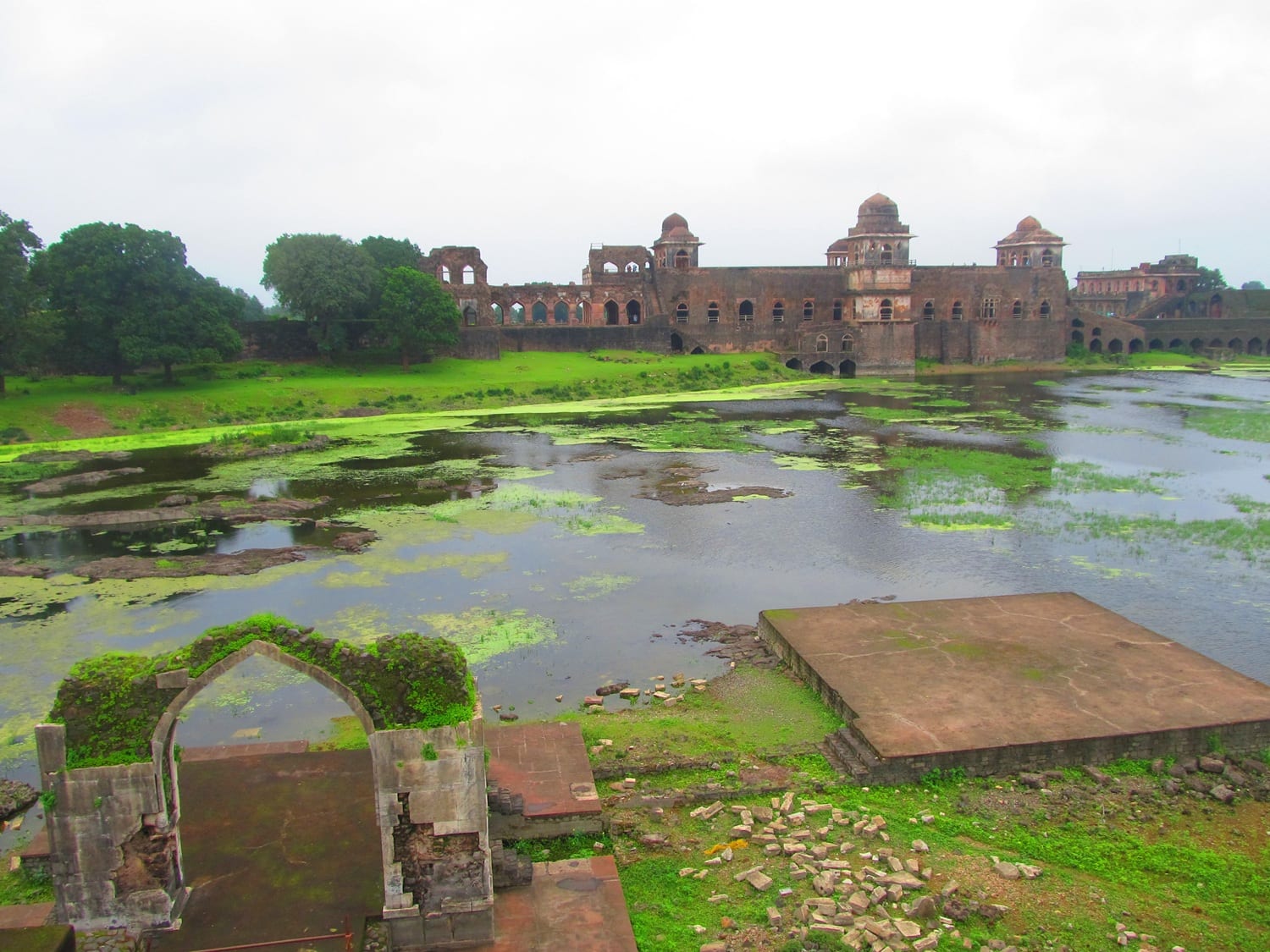



It is that time of the year when air-conditioners are pushed to their limits and people tend to avoid outdoor activity during the hottest parts of a day. While thinking of today, it may also be prudent to look back on how people managed to get through this season in an era without electricity, never mind air conditioning. We look at a cross section of sites from across India:
Sarai Aam Khas Bagh (Sirhind, Punjab): Sirhind, located on the Mughal highway connecting Lahore with Delhi and Agra, was home to a grand caravan sarai called Sarai Aam Khas Bagh. Built in the first half of the 17th century, the sarai had space for both common merchants seeking shelter and a special enclosure for members of the imperial family. In the royal enclosure was a set of rooms used by the Mughal Emperors themselves, when they passed through.
 Building in the royal enclosure of Sarai Aam Khas Bagh at Sirhind with a covered water channel going into the building. (Image source: Arjun Kumar)
Building in the royal enclosure of Sarai Aam Khas Bagh at Sirhind with a covered water channel going into the building. (Image source: Arjun Kumar)
Given the stature of the visitors, this royal enclosure had a sophisticated water management system built to alleviate the summer heat. There was a network of terracotta and brick-lined water channels supplying water to hammams, fountains, and gardens. Sourced from deep wells using a mix of gravity-based systems and manual lifting, water channels were lined with marble sheets to create an evaporative cooling effect. In summer, the water was channelized into sarad khanas and in winter, into hammams. The hammams had underground chambers where water could be heated. And the Charbagh style gardens throughout the sarai also made it easier to manage the Punjab heat.
Lal Mahal at Bari (Dhaulpur, Rajasthan): The Lal Mahal at Bari, in little-visited Dhaulpur district of Rajasthan is not as elaborate as Sirhind’s caravan sarai but was built in the same period. In its prime, it served as a hunting lodge for Shah Jahan himself.
 The Lal Mahal at Bari seen in the winter with birds in the lake. (Image source: Arjun Kumar)
The Lal Mahal at Bari seen in the winter with birds in the lake. (Image source: Arjun Kumar)
The Lal Mahal is not a single building, but a group of structures built on three sides of a lake. The name comes from red sandstone used in its construction. On one side is a building housing a hammam, complete with water channels and underground heating and cooling effect. On the east side are three residential buildings. Of these, the middle pavilion was for the Emperor, the others for his family or accompanying nobles. The Emperor’s pavilion still retains a jharokha where he appeared for an audience, and its elegant stone lattice work remains in place.
In an earlier era, there were gardens around, giving shade. There are small cupolas built on a walkway facing the lake. On a summer evening, breeze along the lakefront is refreshing. In the winter, migratory birds have fun in the water and come to bask on the banks.
Kumatigi (Vijayapura, Karnataka): While the north Indian summer can be brutal, the hot season is equally harsh in peninsular India. And the solutions found in the south were similar to those of the north. In the early 17th century, Bijapur (now called Vijayapura) was a prosperous kingdom benefitting immensely by being on multiple trade routes.
12 kilometres east of Bijapur, in the verdant valley of Kumatigi, a vast recreational complex was built – possibly under the patronage of the then sultan Ibrahim II. The principal feature was a great lake with a dam and various hydraulic works. One of the buildings here is a pavilion with a five-arched façade. Within the structure octagonal and lotus-shaped pools are built into the floor.
 Two storey water pavilion at Kumatigi, near Bijapur in Karnataka. (Image source: Arjun Kumar)
Two storey water pavilion at Kumatigi, near Bijapur in Karnataka. (Image source: Arjun Kumar)
Another pavilion was a two-storey one with an onion shaped dome on top. This dome doubled up as a storage tank from which water was sprayed via copper shower-roses into the upper level. The outer walls of the lower room had several stone spouts – shaped as geese – from which water gushed into the surrounding basin.
Outside the complex with these pavilions is a ruined tower, containing the remains of another hydraulic system. This comprised a series of vertically interlocking wooden wheels with buckets that lifted water from the dam. Little of this remains now but the two pavilions give adequate evidence of superb use of water to beat the heat. Of course, one had to be a sultan to be able to enjoy the benefits.
Mandu (Dhar, Madhya Pradesh): If some sultans in the medieval era were wealthy enough to create buildings that used water for cooling effect, others could build entire cities to that purpose. Mandu, built on an outcrop of the Malwa plateau, was a city built to celebrate water.
 The Jahaz Mahal at Mandu with a talao on one side. (Image Source: Arjun Kumar)
The Jahaz Mahal at Mandu with a talao on one side. (Image Source: Arjun Kumar)
In its prime, over a thousand water bodies – many artificial – were built or channelized around a set of palaces and pavilions. Hundreds of these still survive, giving us a glimpse of the past.
The Munja talao and Kapur talao, for instance, are built on either side of a building and are connected by a canal ensuring equal distribution of water. During the monsoon, when both are full, the building in between looks like a ship, hence its name – Jahaz Mahal. There are cisterns, tanks, stepwells and more – all interconnected via narrow canals. And they worked with varying effect depending on the season.
 An elegant water storage tank at Mandu, near the Jahaz Mahal. (Image source: Arjun Kumar)
An elegant water storage tank at Mandu, near the Jahaz Mahal. (Image source: Arjun Kumar)
Water from the Andheri Baodi - a stepwell – is connected to a hamman via three different tunnels. One tunnel was above a cooking stove to heat the water, the second converted this water to steam while a third supplied the cold water. There were overhead tanks for domestic usage. In the dry season, a manual pulley mechanism was used to draw water up from the tanks.
These buildings came up at a time when Sustainability was not merely an interesting buzzword but a way of life. Living in harmony with water and leveraging it to alleviate seasonal hardship was something that builders incorporated into their designs. Of course, it was a privilege of the ruling gentry to be able to do so, but do today’s wealthiest think on these lines?
Discover the latest Business News, Sensex, and Nifty updates. Obtain Personal Finance insights, tax queries, and expert opinions on Moneycontrol or download the Moneycontrol App to stay updated!
Find the best of Al News in one place, specially curated for you every weekend.
Stay on top of the latest tech trends and biggest startup news.